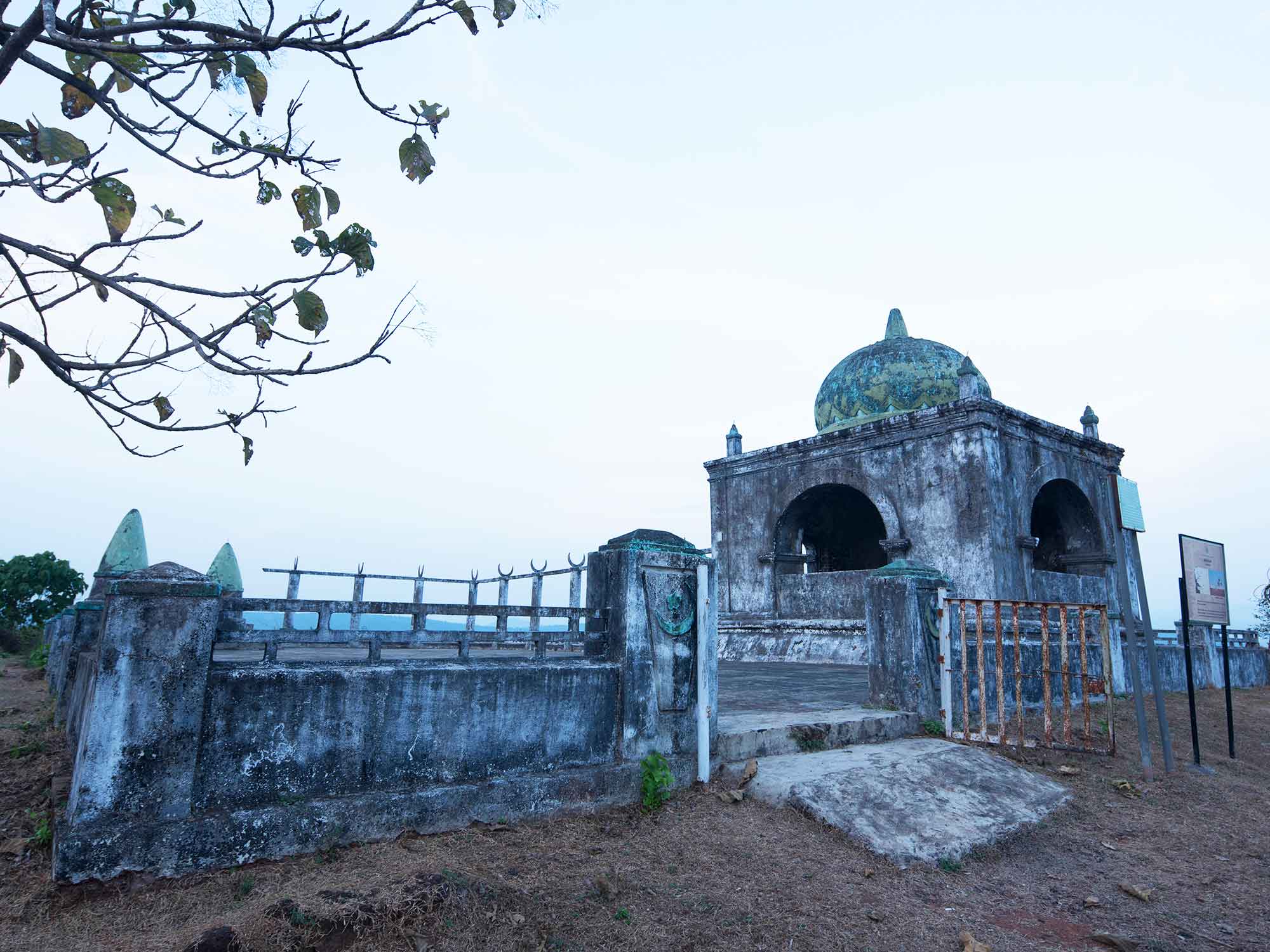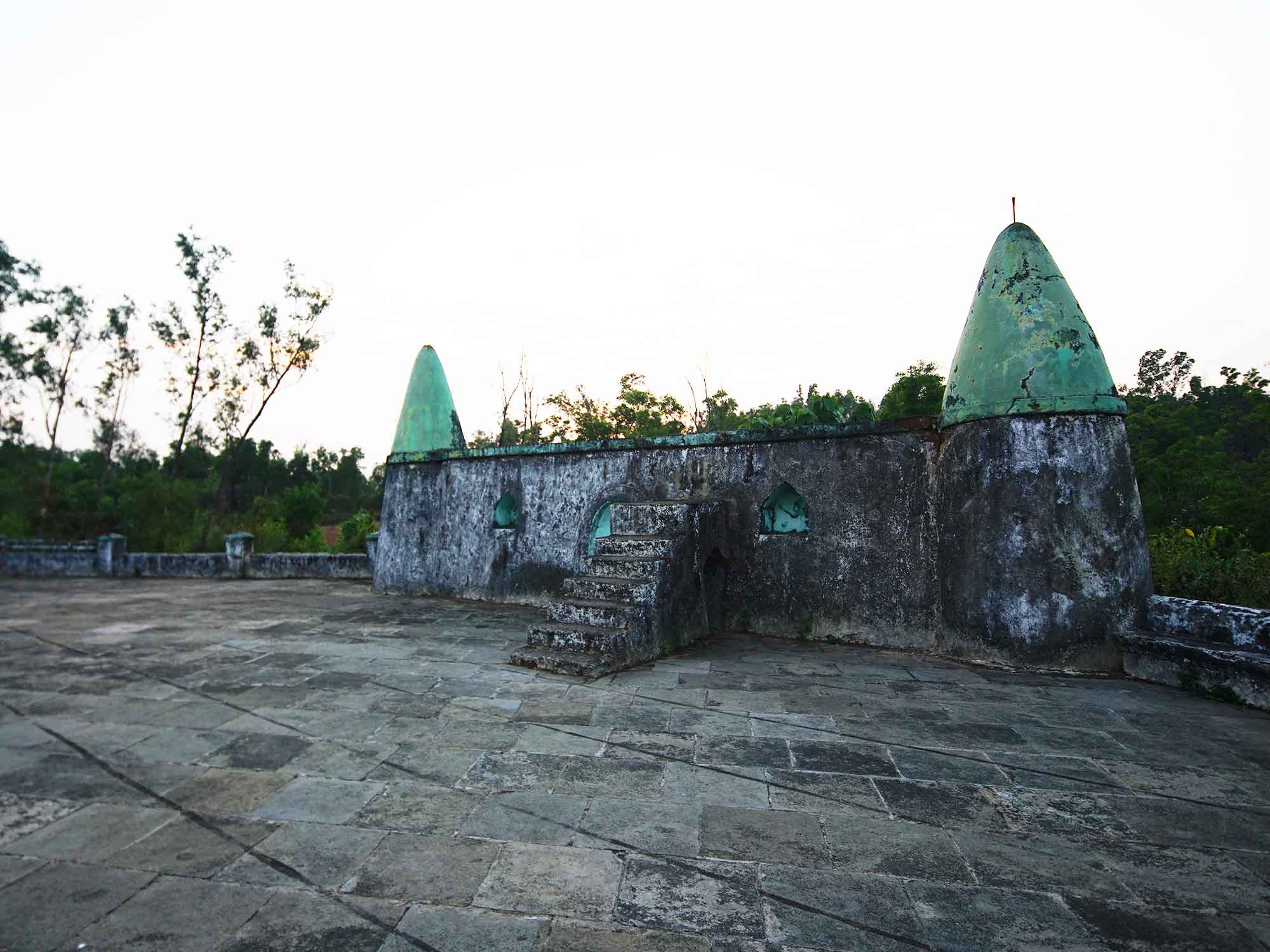![https://map.sahapedia.org/search/article/Namazgah/1833 [1] Sarkar, Studies in Mughal India. [2] Sayed, ‘Bicholim’s Forbidden Namazgah'. [3] Gomes,‘Muslim Heritage Monuments in Goa Preserving Goan Religious Heritage 3'. [4] Sayed, ‘Bicholim’s Forbidden Namazgah'. [5] Outlook Traveller. ‘Explore a little-known facet of Goan history with our Quick Guide to the Safa Masjid'. [6] ‘Prudent Media | My Goem | Namazgah Bicholim | EP 77 | 29 Aug 18' [7] Sayed, ‘Bicholim’s Forbidden Namazgah'. [8] Ibid. [9] Sardesai, ‘Namazgah: Bicholim’s Symbol of Communal Harmony'. [10] NT Desk, ’Rediscovering Goa’s Islamic Heritage'. [11] Sayed, ‘Bicholim’s Forbidden Namazgah'. [12] Ibid. [13] Ibid. [14] Shokoohy, Muslim Architecture of South India: The Sultanate of Ma'bar and the Traditions of Maritime Settlers on the Malabar and Coromandel Coasts (Tamil Nadu, Kerala and Goa). [15] Sardesai, ‘Namazgah: Bicholim’s Symbol of Communal Harmony'.](https://map.sahapedia.org/admin/assets/images/20220581523079Goa_LandscapeInline_Namazgah_DSC00355.jpg) |
| Namazgah, Goa |
Namazgah or Nimoojgoh is one amongst the few remaining Islamic heritage monuments that survived the Portuguese inquisition in state.
Namazgah may be a fifteenth-century eidgah (an open-air enclosure for prayer) situated in Bicholim taluka. it's one amongst the Islamic structures that survived 250 years of Portuguese rule—a amount of spiritual ill-treatment against non-Catholics in state wherever several temples, mosques and spiritual artefacts were destroyed by the Portuguese. Ponda, once a preponderantly Muslim city, was once familiar to accommodate twenty-seven mosques designed throughout the Adil Shahi phratry of Bijapur that preceded the arrival of the Portuguese in state.
The eidgah represents a link between state and therefore the Mughal Empire, though it had been ne'er directly dominated by the Mughals. King Akbar II, the son of Emperor Aurangzeb, rebelled against his father in an exceedingly bid to rule. once his arrange to revolt failing, he fled towards the Deccan. There, he was given protection by the Maratha king Sambhaji in 1681, and that they shaped an alliance to defeat the Portuguese. As a token of appreciation, Sambhaji talented Akbar II the land wherever Namazgah was in-built 1863 and stands to the current day. The word ‘Namazgah’ has its roots in Persian and is probably a fusion of the words namaz (prayer) and eidgah (or idgah, an area of prayer utilized by Muslims solely on the occasion of Eid).
 |
| A 15th century Eidgah in Bicholim |
Located on prime of a hummock with a perspective of the city below, the eidgah are often reached via 240 soil stone steps from the northern aspect. Its design, combining Persian and Turkish designs, and therefore the main structure, that is additionally made from soil stone and coated with lime plaster, is square-shaped with arched doorways. A ‘pumpkin’-shaped dome with a crescent and star sits atop identical. To the west of the vaulted structure may be a wall with two minarets. This wall contains the mihrab, a semi-circular niche designed among, indicating the qibla, or the direction of the Ka’bah in Mecca. it's this wall that the devotees face whereas praying. Another placing feature may be a rectangular yard lined on 2 sides with 10 crescent-topped pillars with stars etched on very cheap. These pillars area unit connected at the bottom to stone benches, that tally Portuguese balcãos (balconies) it's not clear whether or not these were a part of the initial structure, or were later additions influenced by the Portuguese. A raised platform lies adjacent to the yard, thought to be utilized by the Muhammadan whereas reciting from the Qur’an.
Although declared to be a site of importance beneath the state, Daman and Diu Ancient Monuments and architectural Sites and Remains Act 1978, access to the building is sometimes tough. The building is presently accessible to Bicholim’s Muslim community solely at the pageant of Eid.
 |
| The structure represents a link between Goa and Mughal Empire |
The few remaining structures that survived the Inquisition provide rare insights into the history of Islamic presence in Goa— that dates back to a minimum of the tenth century Ce once Arab merchants settled there underneath the Kadamba phratry. tho' protected by the archaeologic Survey of Bharat, Namazgah is presently in want of maintenance because the plaster on the walls has begun to crumble.